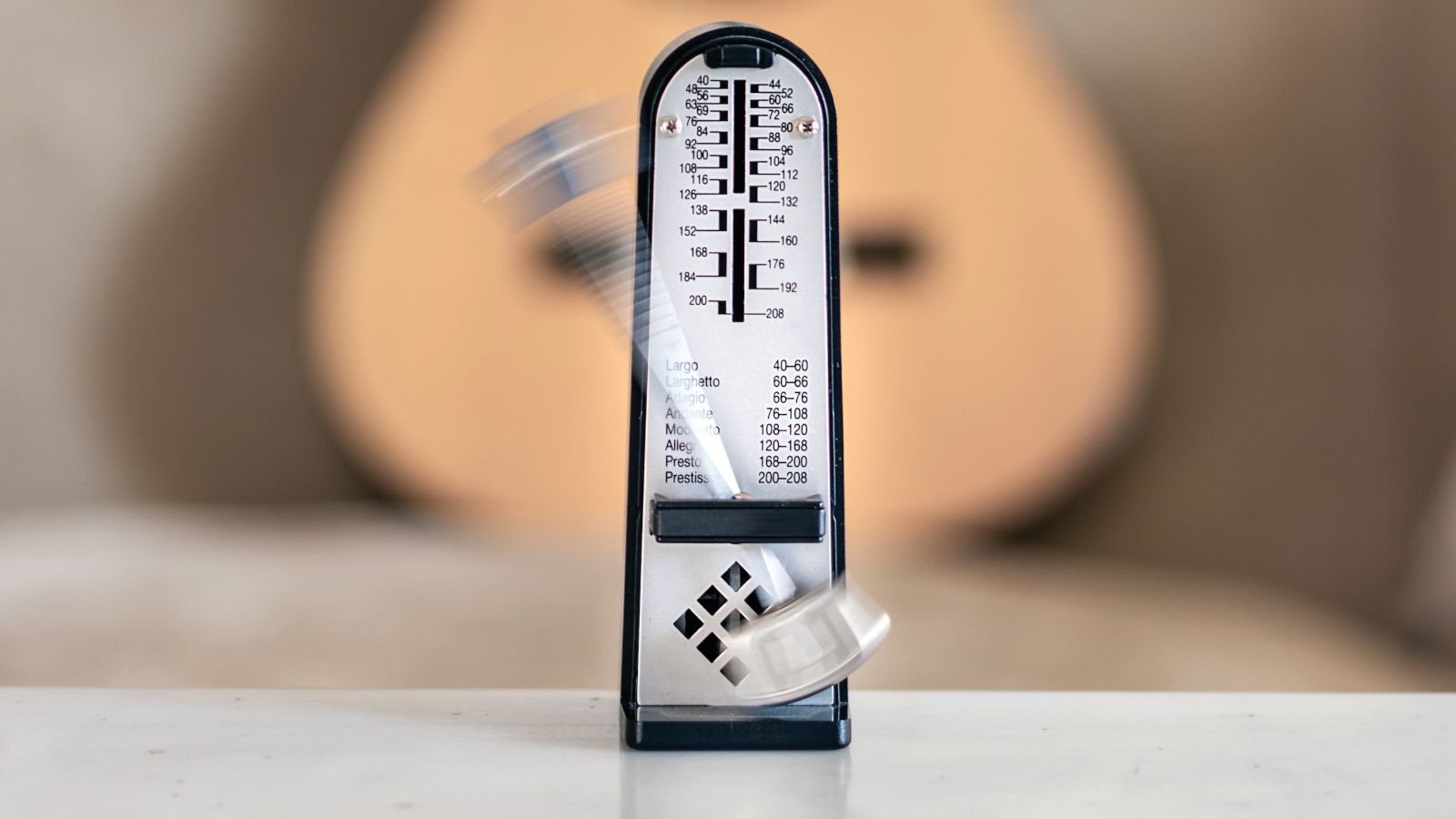Improve Your Groove in Three Simple Steps
Priceless pointers for enhancing your timekeeping

Your ability to keep time says a lot about your skill as a player. It’s also of paramount importance when it comes to getting others to perform with you. No one likes to be hurried or pushed, especially us sensitive musician types.
It’s true for the audience as well. Your groove and your vibe – your overall skills as a timekeeper – have everything to do with how eager people will be to hear you play.
So how can you improve?
1. Become One With the Metronome
When assessing a new student’s skills, guitar teachers agree that it’s not speed but rather consistency of speed that matters. One must be able to play along with a metronome or click track, and do it consistently over the length of a song.
It’s fine to practice each part of a composition individually, but the ability to play through a variety of riffs, chord progressions and melodic runs without changing tempo is the end game.
Try playing a song along to a metronome. Then, turn off the click while keeping your toes tapping in time. How does your tempo compare when you turn the metronome back on? Once you’re able to keep time with some degree of consistency, record yourself performing the tune.
When you’re finished, match the metronome to the tempo on the recording starting with the first verse, then again with the middle, and finally near the end. How much did you speed up or slow down over the course of the recording?
All the latest guitar news, interviews, lessons, reviews, deals and more, direct to your inbox!
When all three numbers are within a few beats per minute, you’re doing great. When all three are the same, you’ve gone beyond playing with the metronome and have become one with it.
2. Go Beyond the Click, and Get Into the Groove
Just because you can play consistently at a given tempo doesn’t mean you have a great sense of groove. The goal is to be so good with straight timekeeping that you can stretch time as the song requires.
Consider Jimmy Page: After years of having to keep straight time as a session musician, he made “Stairway to Heaven” pick up speed until its climactic finale because it’s what the song demanded. And as the band’s producer, he had the freedom to do so. But it’s also good to understand how to make the groove swing within a given meter.
In a 2008 GP interview, G. Love told readers, “Start by thinking of a metronome beat. The pocket is how much space you can put in between when you’re swinging from side to side, beat to beat, like a pendulum. The idea is to stay as long as you possibly can on each side without losing the groove.”
That hesitation is what makes folks start chicken-necking!
3. Free Your Mind
One sure way to consistently fall in and out of time is to overthink what you’re doing. Compare playing to driving: You have to pay attention to other cars, but you can’t just slam on the brakes or hit the gas every time the posted speed limit changes, or when another driver does something unexpected.
On a long haul, it’s fine to put your mind on cruise control and lose track of time for a spell. Once you’ve got a piece of music under your fingers and in your bones, relax and let go. The best feel is free flowing. Let the tune move through you.
When you do, you won’t be keeping time – you’ll be making music.
Jimmy Leslie is the former editor of Gig magazine and has more than 20 years of experience writing stories and coordinating GP Presents events for Guitar Player including the past decade acting as Frets acoustic editor. He’s worked with myriad guitar greats spanning generations and styles including Carlos Santana, Jack White, Samantha Fish, Leo Kottke, Tommy Emmanuel, Kaki King and Julian Lage. Jimmy has a side hustle serving as soundtrack sensei at the cruising lifestyle publication Latitudes and Attitudes. See Leslie’s many Guitar Player- and Frets-related videos on his YouTube channel, dig his Allman Brothers tribute at allmondbrothers.com, and check out his acoustic/electric modern classic rock artistry at at spirithustler.com. Visit the hub of his many adventures at jimmyleslie.com
